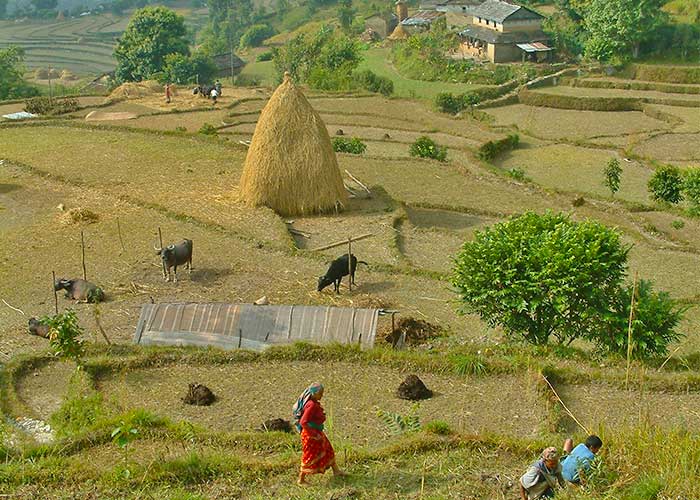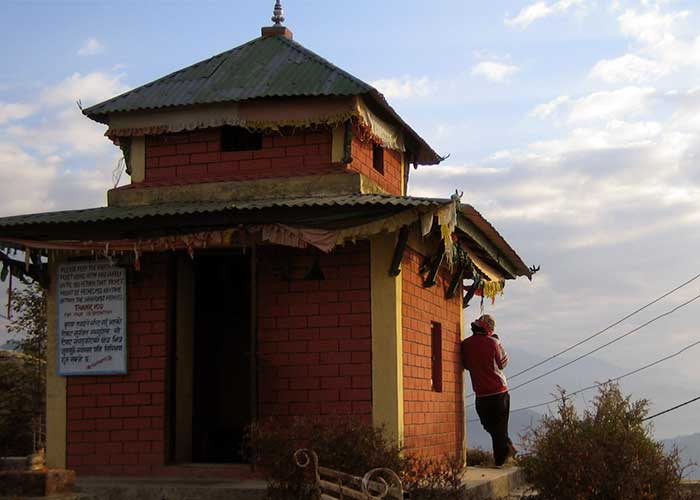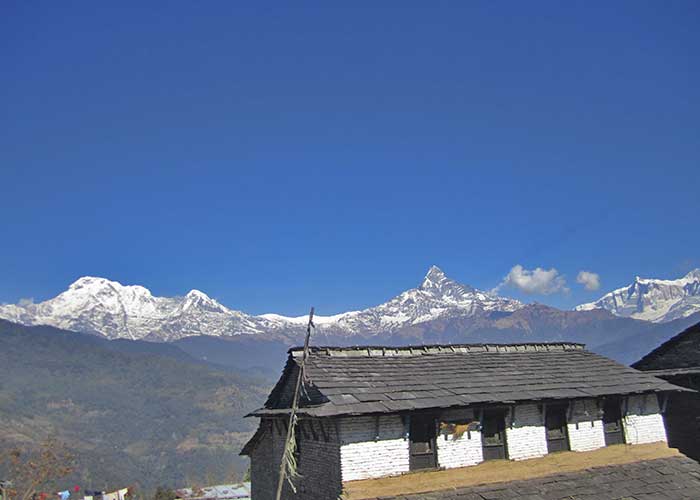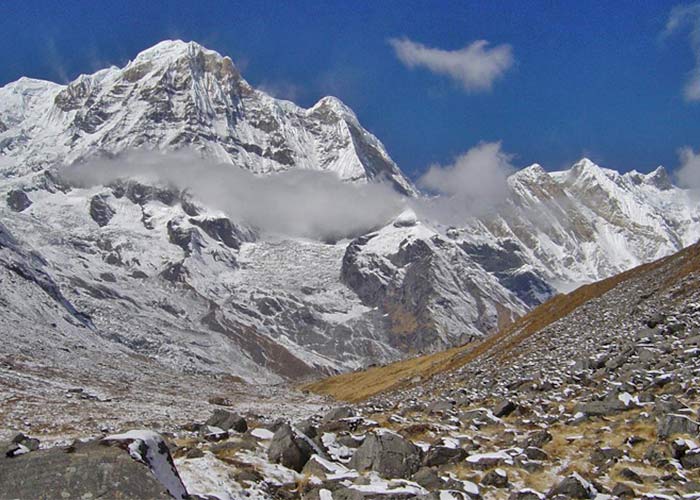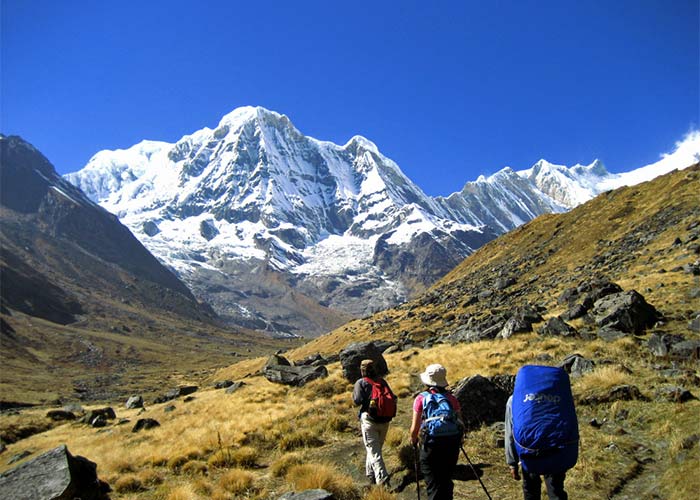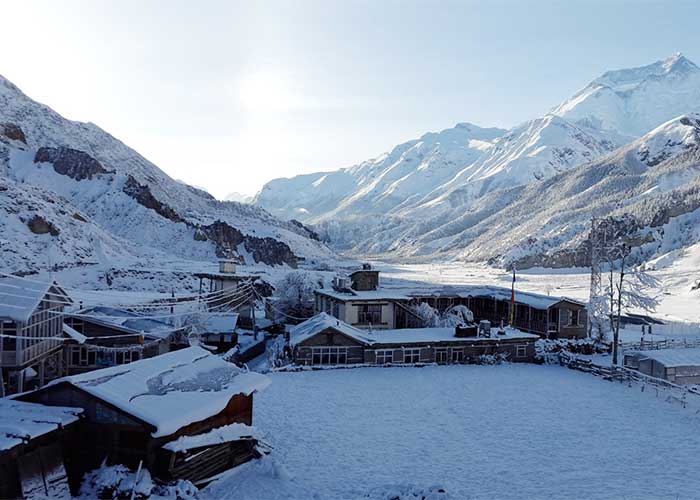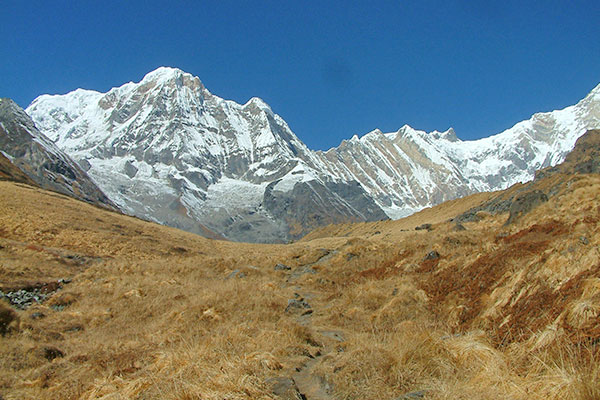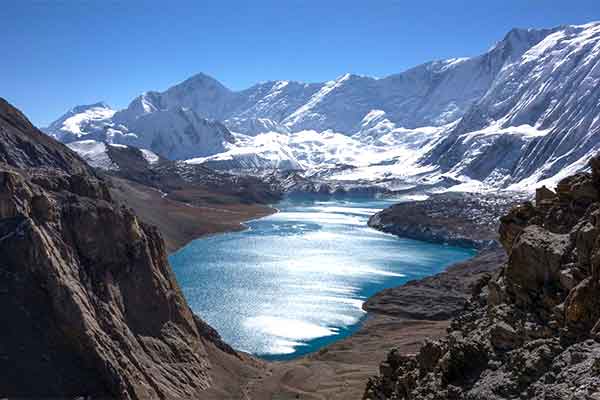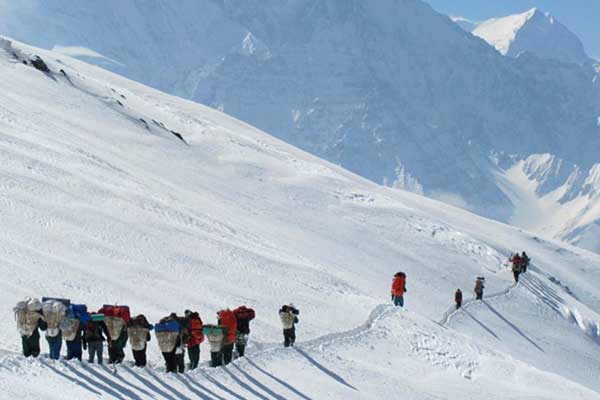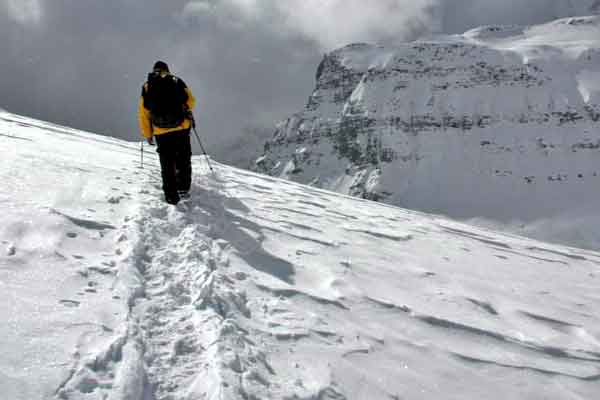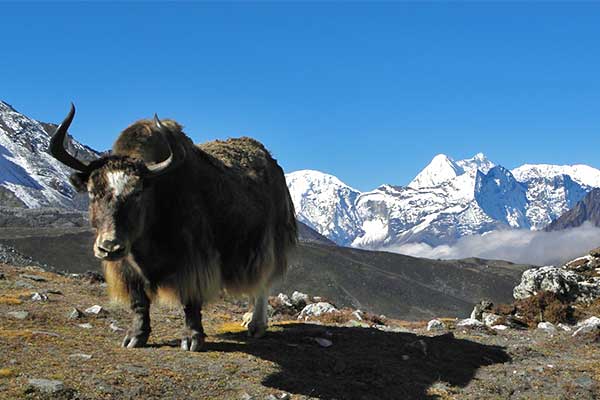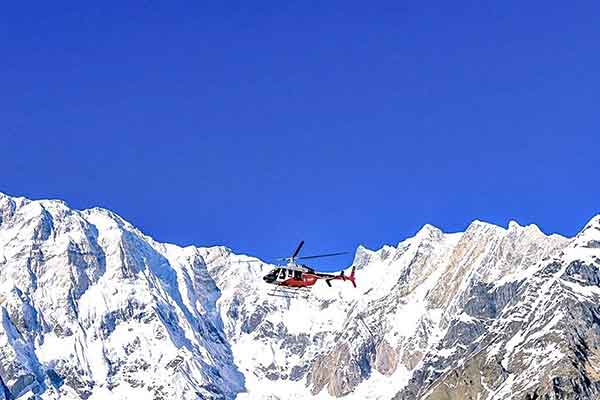Overview
Duration :
16 Days
Secondary Activity:
Culture
Max altitude :
4,130m / 13,545ft
Transportation:
Private vehicle and Local Bus
Trip ends in:
Kathmandu
Accomodation:
Hotel and Tea-House
Primary activity:
Trekking and hiking
Group Size:
Min. 1 Pax
Country:
Nepal
Trip starts from:
Kathmandu
Diffficulty:
Strenuous
Meals:
Nepali and Continental
Best Season:
Autumn and Spring
Trip route:
Kathmandu-Pokhara-Ulleri-Ghorepani-Tadapani-Poon Hill-Chhomrong-Bamboo-Annapurna Base Camp via Machhapuchhre Base Camp-Annapurna Base Camp-Bamboo-Jhinu Danda-Tolkha-Dhumpus-Pokhara-Kathmandu
Trip introduction
Annapurna Base Camp plus Dhampus Trek is one such trek in the Himalayas that takes you near the tops over 7000 and 8000 meters inside a brief timeframe and without much strain. Amid Annapurna Base Camp Trek, trekkers navigate through the towns occupied by various groups, for example, Gurung and Magar, past wonderful waterfalls, terraced farmlands, suspension spans clad with supplication banners, witness sentimental dawn and nightfall’s and get diverted at the nearby up of Annapurna I pinnacle and one of a kind Fishtail Mountain, and grand ice sheets before coming to Annapurna base camp.
Journey: Annapurna Base Camp plus Dhampus Trek
Our incredible voyage which is generally considered as a standout amongst the most well-known trekking courses on the planet starts from Ulleri which is close to Pokhara, the Lake City of Nepal. This adventure to the preface of Annapurna Sanctuary starts after trekkers explore the antiquated legacies of Kathmandu and drive to Pokhara.
You start along the Modi River and consistently make a beeline for the Magar town of Ulleri; the place where we shall stay for the following night before going into the Annapurna Sanctuary zone. Trek proceeds in the preservationist way along Modi River. And through little settlements, waterfalls and buckles, snowcapped vegetation, backwoods with bamboo, orchid, and plant, past torrential slide chutes. And rough landscapes to achieve the base of Fishtail Mountain. Presently we might go up against the trail along the Bhurungdi River. And stroll through thick and lavish rhododendron woods, great terraced farmlands, and long stone staircase as we trek through the settlements of Ghorepani, Tadapani, Chhomrong to Bamboo. And reach at Deurali as we head further in the Annapurna Base Camp Trek.
After reaching the Annapurna Base Camp via Machapuchare Base Camp we can celebrate our accomplishments by taking a group photo and some cherish the moment while up there. Now we shall descent back down from Annapurna Base Camp to the village settlement of Bamboo. And navigate our way further down to Jhinu Danda and Tolkha to ultimately arrive at Dhampus village. Facilitate ahead, trekkers move past chilly moraines and gigantic rocks for about 2 hours. And lastly, take a 45-minute drive back to Pokhara the same day. Upon reaching Pokhara, one can relax for the remaining time or take a stroll around the iconic Lakeside. As tomorrow we leave Pokhara and move towards Kathmandu.
Physical Fitness and Best Season
Our 16 days Annapurna Base Camp plus Dhampus Trek is respectably non-strenuous. And obliges trekkers to have a moderate amount of physical wellness level and a good inspirational state of mind. With a normal of 6-7 hours of a stroll on the uneven landscape; trekkers will confront high heights and thin air on some days amid this trek. The best season for this trek is February to Mid-June and September to December. Contact Nepal Mountain Trekkers for this trek. In order to get the best out of your quest for experience in the Himalayas full of awe-inspiring sceneries.
Special Note:
If this itinerary doesn’t suit your requirement or if you want to customize it, please feel free to contact us. This trek could be customized as per your required time frame and budget limits.
Overview
-
Day 1Arrival in Kathmandu (1,300m/4,264ft):
-
Day 2Kathmandu: Sightseeing and Trek Preparation:
-
Day 3Fly to Pokhara and trek to Ulleri [2,050 m/6,725 ft]: 30 min flight and 6 hrs trek:
-
Day 4Ulleri to Ghorepani (2,750 m/ 9,020 ft): 4 – 5 hours trek:
-
Day 5Ghorepani to Tadapani (2,700m/8,860ft) with a visit to Poon Hill: 6 – 7 hours:
-
Day 6Tadapani to Chhomrong (2,170m/7,120ft): 6 hours trek:
-
Day 7Chhomrong to Bamboo (2,310m/7,578ft): 4 – 5 hours:
-
Day 8Bamboo to Deurali (3,230m/10,595ft): 3 – 4 hours:
-
Day 9Deurali to Annapurna Base Camp (4,130m/13,545ft) via Machhapuchhre Base Camp (3700m/12135ft): 5- 6 hours:
-
Day 10Annapurna Base Camp to Bamboo: 7 – 8 hours:
-
Day 11Bamboo to Jhinu Danda (1,760m/5,770 ft): 5 – 6 hours:
-
Day 12Jhinu Danda to Tolkha (1,710m/ 5,610 ft): 4-5 hours:
-
Day 13Tolkha to Dhumpus (1,510m/ 4,954 ft): 5-6 hours:
-
Day 14Dhumpus to Pokhara (823m/2,700ft): 2 hours walking and 45 minute drive:
-
Day 15Fly from Pokhara to Kathmandu:
-
Day 16Departure Day:
Detail Itinerary
Day 1 : Arrival in Kathmandu (1,300m/4,264ft)::
Arrive at the Tribhuwan International Airport (TIA) and start your journey to one of the most popular trekking destinations in the world, with outstanding diversity in terms of culture and tradition, biodiversity, and natural and architectural heritage. After you complete your formalities at the customs you shall be greeted by our representative. Then you shall be escorted to the hotel of your stay for getting refreshed and relaxed for your jetlagged body. Explore the surrounding areas in the afternoon to increase your familiarity with this nation. Savor the cuisine and hospitality of the hotel. Overnight in Kathmandu.
Day 2 : Kathmandu: Sightseeing and Trek Preparation::
On a day separated for the exploration of the architectural heritage and auspicious religious pilgrimages, we shall have a guided Kathmandu sightseeing. Traversing around the valley we shall pay a visit to the ancient heritages enlisted in the UNESCO World Heritage Site List. The Pashupatinath Temple, one of the most auspicious and sacred Hindu temples dedicated to the Supreme Lord Shiva hosts an electric environment swamped by devotees on many auspicious occasions. The other heritages are the stupas of Boudhanath and Swayambhunath are the Buddhist pilgrimages which are well revered by followers of other religions as well, partly due to the rich heritage and unique culture exhibited by these stupas. We shall also traverse around the complex of Patan Durbar Square; it hosts the ancient Royal Palace, the famous Krishna Temple with unique architecture and carvings, other smaller temples as well as old taps and a much-visited museum. After completing the exploration of these historical sites, we shall have interaction with the trekking guide and get information that shall come in handy during our trek. Get prepared for the trekking adventure beginning the following day. Overnight in Kathmandu.
Day 3 : Fly to Pokhara and trek to Ulleri [2,050 m/6,725 ft]: 30 min flight and 6 hrs trek::
The day begins with the flight to the beautiful city of Pokhara, the starting point of this trek to the base of Annapurna massifs. The short flight of around 30 minutes takes us over the lush valleys and green hills, terraced landscape, and serpentine flowing rivers and along the vicinity of the glittering and snow-clad mountains guarding the region since time unknown. After a short and scenic flight, we shall meet the remaining member of our trekking team and head to the destination of Ulleri. The trekking shall begin from the starting point of Nayapul which we shall reach after traveling by a private vehicle in an inland drive along the Pokhara-Baglung highway in an hour drive. The trek shall start with the small fields, settlements, meadows, and green landscapes as we reach the settlement of Birethanti, a village at the confluence of Modi River flowing from the Annapurna massifs and the Bhurungdi River. Further ahead in the trail, we shall ascend gradually and trek upstream the Bhurungdi River through forests adorned with rhododendron flowers. Along the trail overlooked by domineering peaks of Annapurna and Machhapuchhre/ Fishtail Mountain, we shall trek through the subtropical valley forest, trail carved on the side of the cliff, and a couple of suspension bridges to reach the settlement of Tikhedhunga. After a steep trekking trail with a stone staircase, we reach the village of Ulleri. Overnight in Ulleri.
Day 4 : Ulleri to Ghorepani (2,750 m/ 9,020 ft): 4 – 5 hours trek::
In a trek section with stunning scenery and quaint villages overlooked by the high hills and glittering mountains, we reach the village of Ghorepani, a village in the lap of the high hills and mountains that served as a resting place for ancient traders and modern trekkers. We shall begin our trek with the great view of Annapurna South and Himalchuli mountains, crossing a stream over a suspension bridge and ascent through a long stone staircase a little after trekking away from Ghorepani. Further ahead in the trail are a couple of streams, an area famous for sightseeing of the rare birds including the treepies, parakeets, and others, the settlement of Banthati, and our lunch spot of Nangethati. Continuing along the trail in the company of the Bhurungdi River we shall reach the village of Ghorepani. This village is famous for the scenic landscape surrounding it, the panoramic view of mountains, unique culture, and the blend of modern lifestyle and traditional values. Overnight in Ghorepani.
Day 5 : Ghorepani to Tadapani (2,700m/8,860ft) with a visit to Poon Hill: 6 – 7 hours::
One of the absolute highlights in this trek is in store for the trekkers today as we shall have a view of breathtaking sunrise from the marvelous Poonhill. With the group of enthusiastic trekkers set out with torches in their hands and excitement in their heads, we start our trek to Poonhill before the day breaks. Trekking more than an hour from the village of Ghorepani, we shall find a perfect spot to capture the magic of nature where the sun paints the white snow with the color of rust and yellow which changes as the day progresses. After witnessing the sun rising over the massifs of Dhaulagiri, Annapurna I, Nilgiri, Annapurna South, Annapurna II, III, and IV as well as Laamjung Peak, Hiunchuli, Tukuche Peak, and others, we trek down to the foothill for the lunch. Further on we shall trek to Tadapani through a trail covered by rhododendron forest, stone staircase and meadows, houses made of stone, and other trekkers exploring the region. Overnight in Tadapani.
Day 6 : Tadapani to Chhomrong (2,170m/7,120ft): 6 hours trek::
Heading for the settlement of Chhomrong we initially trek through the dense rhododendron forest and descent onto the Kimrong River. Across the river and through several Gurung settlements, we have the view of panoramic mountains including the Annapurna Peak, Hiuchuli peak, and the Fishtail Mountain en route beside the lush and green valley surrounding the trail. Further on the trail leads us to Gurjung village and an uphill climb for some time we reach the village of Chomrong. Beautiful villages and the view of mountains, suspension bridges, waterfalls and hills, local cuisines, and remote lifestyle are part of our trek before we reach the destination of Chhomrong village. This village is home to the Gurung community and has an excellent view of Fishtail Mountain and the narrow canyons of the Annapurna Sanctuary. Overnight in Chhomrong.
Day 7 : Chhomrong to Bamboo (2,310m/7,578ft): 4 – 5 hours::
Trekking in this section of the trail today we shall follow the gorge of the Modi River and trek upstream to the settlement of Bamboo. Beginning with the descent on the stone staircase we reach the Chhomrong River and reach the small settlement of Tilche through the dense forest of bamboo, rhododendron, and oak trees. Trek through the rocky trail takes us to the naturally blessed small village of Sinuwa surrounded by lush hills, valleys, and green forests; the beauty of which is breathtaking and enchanting to the trekkers in this route. We traverse through the forests inhabited by some wild animals, waterfalls, and pristine surroundings, and the long and steep stone staircase to Bamboo where we can find the mixed vegetation of rhododendron and bamboo. We shall explore the village and get refreshed in this village for today. Overnight in Bamboo.
Day 8 : Bamboo to Deurali (3,230m/10,595ft): 3 – 4 hours::
Today we have a relatively shorter trek to Deurali of around 4 hours which shall also serve for the purpose of acclimatization as we shall be heading for the base of Annapurna massif the following day. Starting the trek we have a short and less steep climb onto the settlement of Dovan, the name meaning confluence of two rivers. Surrounded by the dense forest of Bamboo, Oak and Rhododendron we also trek past the sacred temple of Punjim Barah, and along the Modi Khola as we reach the Himalayan hotel. Marching past the avalanche-prone area and the Hinku cave, the ascent continues to the settlement of Deurali, the last stoppage in this trek before we enter into the vicinity of Annapurna base camp and the village at the foot of the Modi Himal and the Fishtail Mountain. Intermittently we also encounter the marvelous nature displaying its magic through the rivers and valleys, flowers, stone steps, old bridges, and serene landscape. Overnight in Deurali.
Day 9 : Deurali to Annapurna Base Camp (4,130m/13,545ft) via Machhapuchhre Base Camp (3700m/12135ft): 5- 6 hours::
The big day is there for the trekkers who have embarked on this journey into the vicinity of the majestic massif of Annapurna and the Machhapuchhre peaks. With the sparser vegetation and rocky path, big boulders around the trail, glacial river and waterfalls, and parting away from the river to the moraine and ridge, we trek to the base camp of the Fishtail Mountain. The base of this sacred mountain of Machhapuchhre is a stoppage for the trekkers as the climbing to Fishtail Mountain is restricted. From this base camp, we have a view of mountain massifs including the Annapurna ranges, the Fishtail Mountain, Hiuchuli Peak, Gaganurna Mountain, and others. We keep on going forward in the trail where the vegetation is replaced by rocky terrain and through the route in between the gorge between the moraine ridge of Annapurna South and Hiuchuli Peak and the avalanche-prone area before we reach the Annapurna Base Camp. This much-awaited visit to the base camp provides us with a panoramic view of the Himalayan massifs. Exploring the surrounding, we can visit the Annapurna glacier as well. Overnight in Annapurna Base Camp.
Day 10 : Annapurna Base Camp to Bamboo: 7 – 8 hours::
We shall wake up early in the morning before the day-break so as to witness the marvelous sunrise which causes the whole Himalayan massifs to glow and shine by the golden rays of the sun. Capturing the beautiful moments in the natural amphitheater we trace our steps back through the same route which we ascended to this marvelous place. Trekking past the avalanche-prone areas with large boulders we turn towards the Machhapuchhre Base Camp and slowly get closer to the torrential Modi Khola. Covering the distance in a slower fashion we take the path past the Machhapuchhre Base Camp, the German meteorological project, a couple of suspension bridges over the small and big rivers, the surrounding overlooked by the dense bamboo, oak, and rhododendron forest that becomes more prominent as we approach the lower altitude. Intermittently we traverse through several villages and trail from the chilly environment to more humid altitudes. After a long descent in a slow fashion with breaks in between for refreshment, we reach the settlement of Bamboo. Overnight in Bamboo.
Day 11 : Bamboo to Jhinu Danda (1,760m/5,770 ft): 5 – 6 hours::
A more relaxing trekking journey and the destination of Jhinu Danda shall bring some relief to the trekkers dealing with strenuous terrain on their way to the base camp of Annapurna massif. Beginning with the climb to the village of Khuldighar, the spot with helipad, and then to the settlement of Sinuwa. In the trail ahead trekkers get the opportunity to explore the beautiful rhododendron forest before reaching the Chhomrong village. The trek from Chhomrong village to the Jhinu Danda is a steep descent past the settlement of Taulung and the intersection of the trails leading to Tadapani and Jhinu Danda. With the dramatic view of the valley and the terraced landscape, we reach the village of Jhinu Danda. The highlight of this place is the natural hot spring where trekkers relax after long trekking to the Annapurna base camp. The water this spring is believed to cure some skin diseases as well. Overnight in Jhinu Danda.
Day 12 : Jhinu Danda to Tolkha (1,710m/ 5,610 ft): 4-5 hours::
The descent to the lower altitude continues as we trek to Tolkha after exploring the natural hot springs at Jhinu Danda. The trail leads us to the Khumrong River and trekking some time after crossing it, the trail takes us to the large suspension bridge over the Modi River past couple of hours’ trekking. Through the large meadows and terraced fields, along with stone steps that come occasionally along the trail and smaller settlements, we reach the village of Landruk. With the Modi River flowing down the valley and trail carved out in the hillside, we trek past through the terraced hills, smaller settlements, ups and downs in the trail takes along the suspension bridges before reaching the smaller settlement of Tokla. Overnight in Tolka.
Day 13 : Tolkha to Dhumpus (1,510m/ 4,954 ft): 5-6 hours::
This section of the trek starts with a half an hour trek to the summer settlement of Bhedi Kharka and further through the stone steps and twisting trails we reach the settlement of Pritam Deurali with the view of Annapurna south and Hiuchuli in between the trek. Further on is the Bhichok Deurali and trek of an hour straight is the beautiful village of Pothana that provides wonderful scenery of the Himalayas including the unique Fishtail Mountain. From Pothana we part away from the trail leading to Kande and descent to the Australian Camp and through the rocky trail surrounded by lush vegetation we trek past the settlement of Deurali. Further on along the trail is the trek through the dense forest for about thirty minutes which opens up to meadows and up the village and finally to the village of Dhampus. Intermittently we have the view of Machhapuchhre Mountain, stone stairs, rolling and layered hills as well as lush valleys and remote villages that seem to have preserved the tradition and culture. Overnight in Dhampus.
Day 14 : Dhumpus to Pokhara (823m/2,700ft): 2 hours walking and 45 minute drive::
From the village inhabited by the Gurung community, the village of Dhampus, we head for the lake city of Pokhara after joining the Baglung highway near the settlement of Phedi after a couple of hours’ trek. Starting with the jaw-dropping sunrise over the glittering mountains, layered and mist-covered hills and valleys and the terraced landscape we trek continue our trek past the lakes and forests, smaller settlements cultivation fields, and vast landscape overlooked by huge green hills and snow-capped mountains including the Fishtail Mountain, Dhaulagiri and Tukuche Peaks to the far before reaching to the ending point of our trekking at Phedi. After this, we join the company of private vehicles for an inland drive to the beautiful city of Pokhara and call it a day for our trekking in the Annapurna region. Explore the surrounding areas of the famous Lake Side area of this city that embraces a modern lifestyle with the preservation of traditional arts and crafts. Overnight in Pokhara.
Day 15 : Fly from Pokhara to Kathmandu::
Ending the enriching and entertaining trek into the region rich in cultural diversity, scenic and landscape-related variations and natural marvels we take a flight to the capital city of Kathmandu from Pokhara. This short and scenic flight of around 30 minutes takes us through the scenic and vast landscape, view of the marvelous and humongous mountains, valleys and hills, terraced lands and cultivation fields as well as torrential rivers we land in Kathmandu. The flight and amusement en route never fail to amuse the travelers each time they witness these natural marvels. After landing in the domestic terminal of the airport, we escort you to the hotel of your stay. Get rest for some time and explore the surrounding streets for some souvenir shopping for your near and dear ones. Pack your bags for the return flight to the onward destinations. Overnight in Kathmandu.
Day 16 : Departure Day::
The end of an extraordinary trekking expedition in the Annapurna region comes today. Our representative shall escort you to the Tribhuwan International Airport in Kathmandu for your departure flight from Nepal to your respective destinations at least three hours prior to the scheduled flight. We hope that the variations you witnessed in this trek, the breathtaking natural beauty and scenery, lofty mountains, and richness of culture and traditions have created a permanent place in your memory lanes. You shall be awaited for myriads of other adventures and activities in this land of mysticism, spirituality, and tourism.
Price Includes
- Airport pick-up and drop
- 3 nights Hotel in Kathmandu(Hotel Green Horizon or similar standard)
- 1-night Hotel in Pokhara
- All accommodation during the trek in the best hotels/tea-houses in the area (differing according to the price you wish to spend)
- Sanitation: The accommodation we provide will be neat and clean with warm-hospitality and quality services.
- Single Accommodation: You won’t have to share your accommodation with anyone else so that your privacy is protected.
- All foods during the trek: Breakfast, Lunch, and Dinner; any items on the menu as much as you wish to consume.
- We provide hygienic and safe meals to re-energize you.
- We request you not to waste your meals for it is difficult to transport food in the rural area.
- You are not allowed to share your meals with anyone else from another group.
- Transportation costs: Either drive or domestic flight in (Ktm – Pkr- Ktm). With other driving fares such as drive from Dhumpus to Pokhara
- Professional and Highly experienced English-speaking Trekking Guide licensed by the Government. Including their lodging and food.
- Local Staffs: Our guides are locals of the region which ensures that you will surely get to explore a bit more during the trek than with any other guides.
- Experienced: With the experience of more than a decade of working in this field, our trekking guides possess excellent knowledge on briefing during the trek as well as they are experts in handling all kinds of critical situations that might occur during the trek.
- Insurance: Nepal Mountain Trekkers have an insurance policy for all our trekking staff.
- Porters (1 porter for 2 trekkers with a max load of 25 KG). Including their lodging and food.
- Local Staffs: The porters we hire belong to the same region where we trek in order to provide employment opportunities to the locals as well as to make you explore every prospect of the region.
- Four seasonal sleeping bags, down jacket, Nepal Mountain Trekkers duffer bag, t-shirt, and trekking map (Note: down jacket and sleeping bag are to be returned after trip completion)
- Trekking permits: TIMS card and Annapurna Conservation Area(ACAP) fees
- A comprehensive medical kit
- Rescue arrangement service
- 13% VAT and 10% service charges
- Farewell Dinner
Price Excludes
- Visa fee to enter Nepal (Visa Information)
- International flight tickets and extra baggage charges
- Food in Kathmandu and Pokhara
- Extra night accommodation and meal costs in Kathmandu due to any change in the scheduled itinerary
- Travel insurance/ Rescue operation costs
- All personal expenses
- Tip for guides and porters
Equipments
 Head
Head
- Sun hat or scarf
- Light balaclava or warm fleece hat
- Sunglasses
- Head Torch
- Suncreams(40+) and Lip Balms
 Upper body
Upper body
- Cotton t-shirts and thermals
- Fleece jacket
- Waterproof jacket
- Down jacket
 Lower body
Lower body
- Lightweight cotton pants (long)
- Waterproof pants
- Inner thermals
 Feet
Feet
- Thin inner socks (3 pairs)
- Thick, warm wool hiking socks
- Comfortable hiking boots
- Shower sandals
 Hands
Hands
- Gloves (Cotton and Waterproof)
- Creams
- Sanitizer
 Accessories
Accessories
- Sleeping bag rated to (-20F/-30C recommended)
- Trekking bag (Rucksack)
- Duffel bag
- Large plastic bags (for keeping items dry inside trek bag)
- Trekking poles (optional, recommended)
- Water bottle or camel bag
- Toiletries and Tissue Papers
 First Aid Kits
First Aid Kits
- Personal Regular Medicines
- Knee Caps
- Bandages
- Ointments
- Blister Tape
 Miscellaneous
Miscellaneous
- Medicines: We recommend you bring your regular medicines; we will provide a first aid kit from our side.
- Light-weighted Towel
- Swiss Knife
- Passport and extra passport photos
- Water Purifying Iodine Tablets, Drop or Sterilizer
- Day Pack (35-45 L)
- Crocs (evenings & washing)
- Gloves (lighter & heavier for passes)
- Camp Towel
- Trekking Poles (optional, recommended)
- Down Booties (optional, recommended)
- Bladder (optional, recommended)
- Extra Batteries
- Battery Chargers
- Yak Trax (for treks with icy passes)
- Camp Washing Bowl (optional, collapsible for clothes)
- Laundry Detergent (Kathmandu) or Bio-degradable Clothes Soap
- Small Solar Panel (optional, recommended for iPods, iPhones, camera batteries, Kindles)
- Zip-Lock | Plastic Bags
- Rehydration | Electrolytes
- Snacks!
- Personal Medical Supplies
- Micro Spikes
- Medical Supplies
- We strongly suggest bringing Western meds with you as there are a lot of Indian fakes on the market!
Suggested: Diamox, Azithromycin, Ciprofloxacin, Tinidazole, or Flagyl & Augmentin. Bring COMPEED for covering blisters & good tasting electrolytes &/or rehydration salts (Emergen-C is a good American brand). The local versions aren’t very appealing. - We also recommend bringing strong knee & ankle supports & braces, ACE bandages for sprains & strains, Tegaderm &/or other would coverings. Duct tape is always useful. We’re happy to take excess medical supplies off your hands when you leave if you won’t need them and pass them on to others. We use lots of the large amount we have with us to treat locals we meet when trekking.
Related Trips
You will also like …
